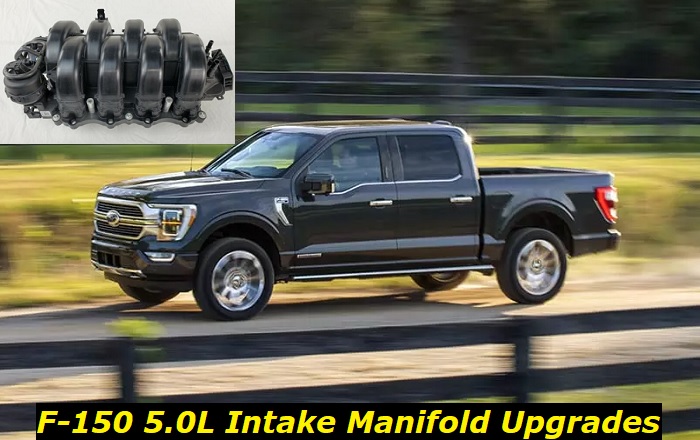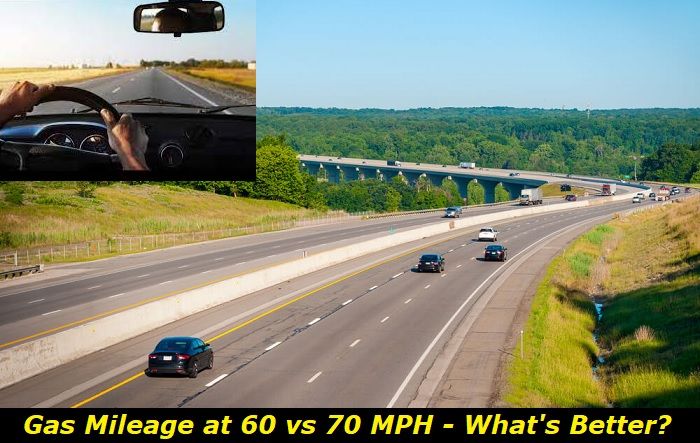The Ford F150 version with the 5.0L engine is a popular choice for drivers looking for power and durability. The power unit has many features that make it a great option, such as its strong construction and its ability to handle a variety of terrains and loads. Additionally, it is known for being fuel-efficient and for providing excellent performance.
Key features and my opinion about the engine
- Production years:2011-now
- Average lifespan of Coyote:280,000-310,000 miles
- Fuel supply type:port injection, later-combined injection (port+direct)
- Power range:360-460 hp
- Fuel efficiency:awful
- Engine block material:aluminum
- Engine reliability score:high
- The most common problems:oil leaks, weak plugs and coils, electronic throttle issues, EGR problems.

What Does the Intake Manifold Do?
The intake manifold in your F150 consists of a number of tubes. It makes certain that the air entering the engine is dispersed equally throughout all of the cylinders. The air is utilized in ensuring the optimization of the engine's combustion process. Furthermore, the intake manifold aids in cooling the cylinders to prevent the engine from overheating.
How an Intake Manifold Upgrade Works
An intake manifold upgrade is a modification that you can make to your Ford F150's engine that will improve its performance. The upgrade replaces your stock intake manifold with a newer, more efficient model with a kit. It is designed to deliver more airflow to the engine, which will improve its overall performance.
What are the Benefits?
The first thing that usually comes to mind when we hear about intake manifold upgrades is an increase in performance. However, there's actually more to that. This part will show you in detail the power gains plus other benefits you may enjoy from the upgrade.
Here are the advantages of getting an intake manifold upgrade for your Ford F150 5.0L engine:
1. Performance Gains
The increased airflow to the engine results in improved performance overall. The horsepower and torque boosts from the manifold upgrade vary depending on the specific model that you have chosen, but it can be as much as 10 to 15 hp and 10 to 20 lb-ft of torque.
2. Better Fuel Efficiency
The upgrade is designed to provide a more efficient air intake system, resulting in better fuel economy. The improvement in fuel economy that you can derive from this is estimated to be around 2% to 5% better.
3. Other Benefits
- The manifold upgrade is known to improve throttle response and reduce turbo lag.
- A new manifold is optimized in keeping your vehicle's emissions in check.
- The upgrade provides an improvement in the truck's cold-start performance.
- The engine will be in better condition to handle its peak loads and navigate more difficult terrain with ease.
- The auto will be less likely to stall or experience other power loss issues.
- Installation can be completed in a few hours of uninterrupted work.
- There are many aftermarket options available for you to choose from.
What are the Downsides?
Every benefit comes with a trade-off, hence, here are some of the risks you are exposing your engine and your truck when going for an intake manifold upgrade:
1. Check Engine Light Activation
There is the potential for the "check engine light" to come on after installation. This is due to the fact that the new manifold can cause the engine to run leaner than before. The light will go off once the computer adjusts the air-fuel mixture.
2. Emission Issues
There is a chance that the truck will not pass an emissions test after installation if you live in an area that requires it. Some high-performance grade manifold upgrades can result in higher NOx emissions.
3. Other Disadvantages
- If you are not careful during installation, it is possible to damage other engine components.
- The upgrade can be very expensive.
- It is advisable to have a professional mechanic do the work if you are not comfortable doing it yourself. However, this can easily add up to your expenses.
How to Successfully Install One
The successful installation of an intake manifold upgrade to your F150 can be accomplished with the proper tools and know-how. This typically involves the following steps:
- Disconnect the battery before beginning any work on the vehicle. This will prevent any accidental sparks from causing damage or injury.
- Remove the air cleaner assembly from the engine bay and set it aside. This will give you access to the throttle body and other components that need to be removed for the installation of the new manifold.
- Disconnect all of the hoses and wires that are attached to the old manifold and remove it from the engine bay. Be sure to label each wire and hose so that you can reconnect them correctly later on.
- Install the new intake manifold using the same method as the removal of the old one. Make sure that all of the hoses and wires are connected correctly, and then reattach the air cleaner assembly to the engine bay. Reconnect the battery and start your truck for a test drive.
Although everything looks easy in the way that we have painted a general picture of the process here, it should be noted that you will come across several crucial components of your truck in the vicinity of your intake manifold - not to mention that you will be working on the engine itself. There are a lot of things that could go wrong with improper installation, incorrect calibration, and the use of substandard kits, too.
The symptoms of a badly installed or defective intake manifold can manifest in the following:
- Engine misfires
- Poor fuel economy
- Rough idle
- Loss of power
- Excessive exhaust smoke
- Check engine light on
- Overheating
All these can easily get out of hand and cause serious damage to your engine. In addition, accidents and fires can occur with a problematic intake manifold upgrade. Therefore, it is important to leave all the work to a professional mechanic to ensure its quick and problem-free mounting.
Cost of the Upgrade
The cost of an intake manifold upgrade will vary depending on the specific needs of your engine or your preferences. However, in general, upgrading to a higher-performance intake manifold can start from a few hundred dollars.
The exact price will depend on the brand and model of the intake manifold kit you have chosen as well as any other necessary parts or labor required for installation. In some cases, it may be possible to find used or aftermarket parts that can save you money on the overall cost of the upgrade.
According to F150 owners who have gone through the process and mechanics who are familiar with the matter, the cost of the upgrade can run around $300 to $1,100. The intake manifold replacement is about $200 to $600 while labor costs can drive you back by an additional $100 to $500.
Ultimately, the best way to get an accurate estimate for your particular situation is to consult with a qualified automotive technician/mechanic in your area or your preferred shop.
Tips When Shopping Around for the Best Value of Your Intake Manifold Upgrade
To get absolute savings while going after your goal, here are a few things that you should remember if you are looking to get the best value for your F150 5.0L intake manifold upgrade:
- Choose a reputable and qualified automotive technician or mechanic to install your upgrade. This is to save you from unscrupulous shops that may end up in more trouble than their worth.
- Compare prices between different brands and models of intake manifolds before making a purchase to get the best value from your purchase.
- Keep an eye out for sales or discounts on aftermarket parts to cut your cost on parts or labor and maximize your savings.
- Ask around for advice or recommendations from other Ford F150 owners who have upgraded their engines to get actual information from people who have experienced the process.
Should You Go for It?
Is an intake manifold upgrade worth your money? If you are looking for a way to improve your F150's performance, then all this may be worth considering.
Keep in mind that the results you see may vary depending on other factors such as your driving habits and the type of engine you have though. Ultimately, it is up to you to decide if the benefits are worth the cost or the potential risks.
About the authors
The CarAraC research team is composed of seasoned auto mechanics and automotive industry professionals, including individuals with advanced degrees and certifications in their field. Our team members boast prestigious credentials, reflecting their extensive knowledge and skills. These qualifications include: IMI: Institute of the Motor Industry, ASE-Certified Master Automobile Technicians; Coventry University, Graduate of MA in Automotive Journalism; Politecnico di Torino, Italy, MS Automotive Engineering; Ss. Cyril and Methodius University in Skopje, Mechanical University in Skopje; TOC Automotive College; DHA Suffa University, Department of Mechanical Engineering






Add comment